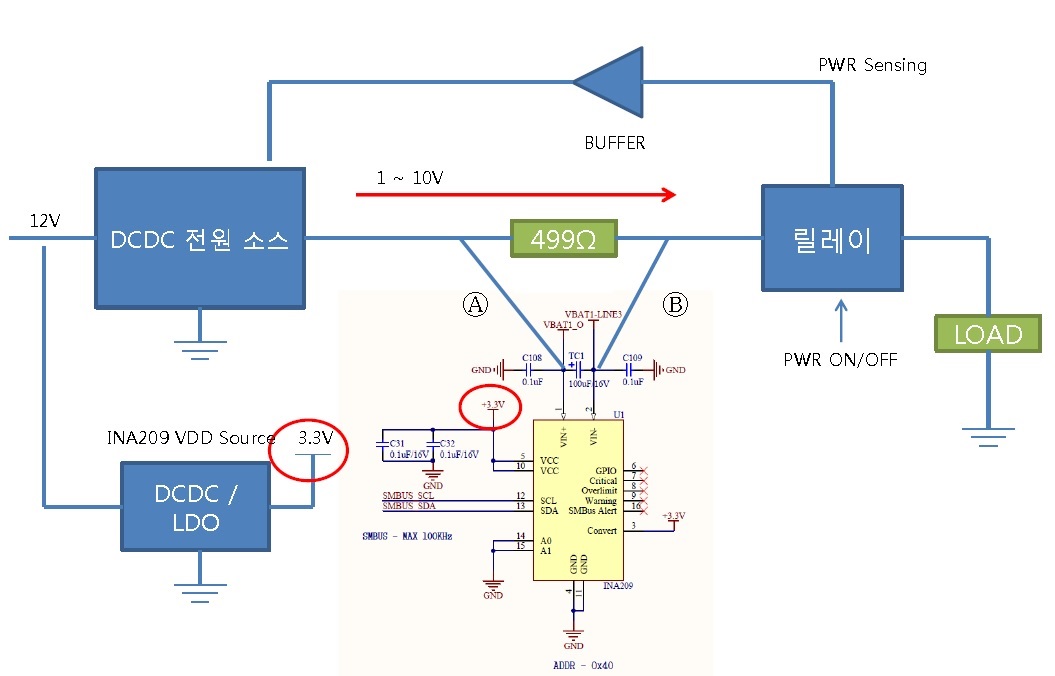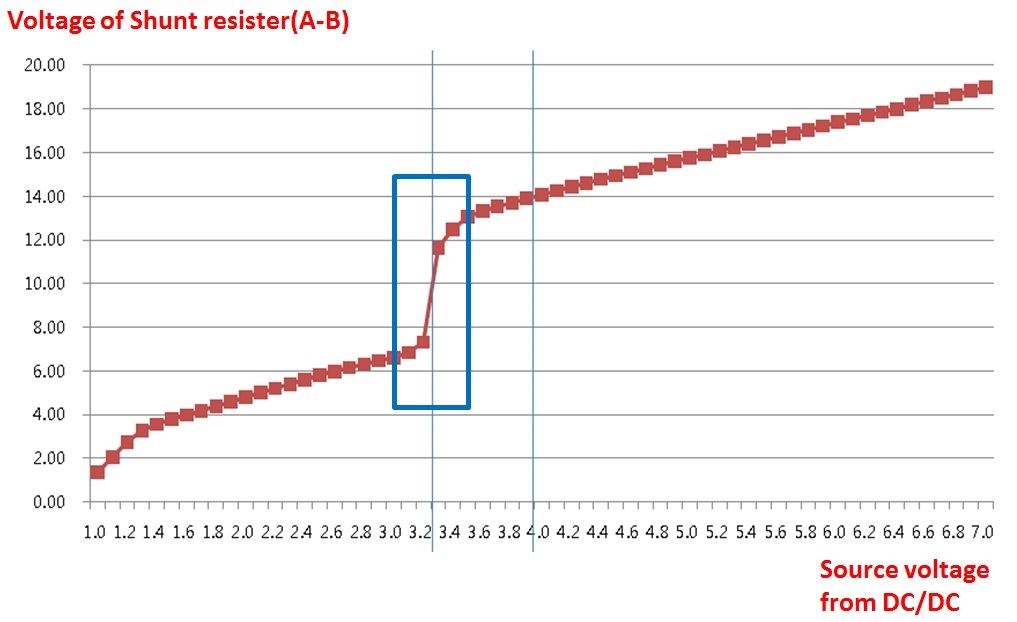Other Parts Discussed in Thread: INA226, INA210
Dear team,
Please review below block and abnormal non-linearity section(Blue box) and let me know your opinion why this section appear.
< phenomenon>
- If INA209 is disconnected, abnormal non-linearity section disappear
- If Voltage of INA209(3.3V) change to 3.2, abnormal non-linearity section is moved to about3.2V.
If you need more information, please let me know.
Thank you.




